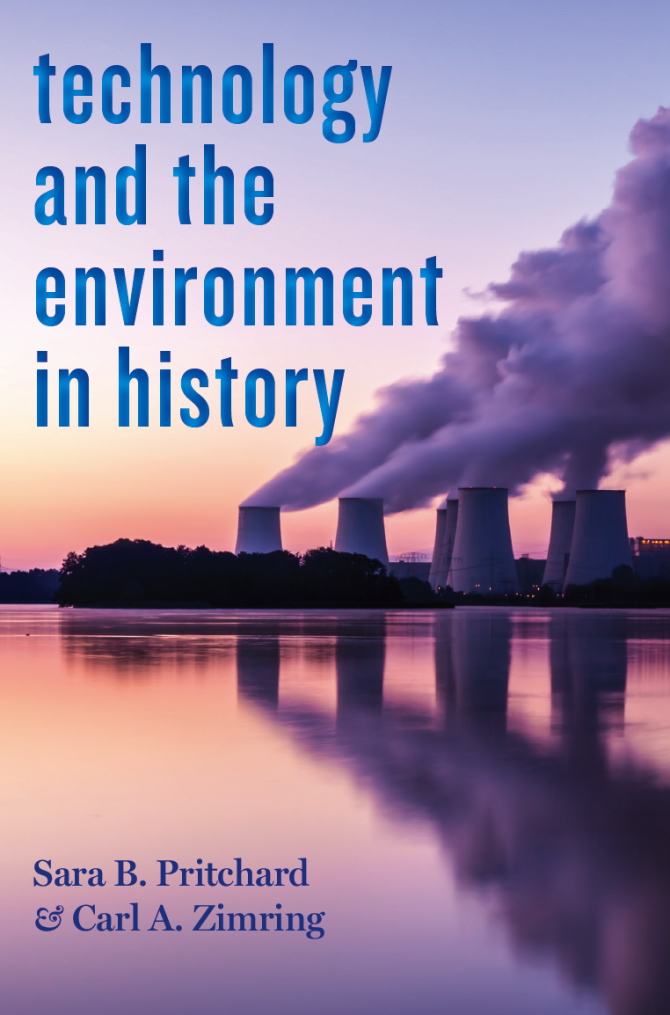Authors break down history of ‘envirotech’ in new book
By Kate Blackwood
A new research field – environmental technology, or ”envirotech” – is emerging during an age when food systems span the globe, waste pollutes the natural world and natural disasters seem to have higher and higher impacts on communities.
In “Technology and the Environment in History,” Sara B. Pritchard, associate professor of science and technology studies in the College of Arts and Sciences, and co-author Carl Zimring, an environmental historian at the Pratt Institute, give a historical picture of envirotech, analyzing the interconnected nature of dilemmas such as carcinogens, energy crises, invasive species and many others at the intersection of technological and environmental history.
“By thinking about technology and the environment at the same time, we challenge clean divisions between environmental and technological processes, and instead assume that technical systems are never entirely closed systems,” the authors wrote. “Doing so enables us to expect, anticipate, and hopefully prevent some of their negative consequences for both people and nonhumans.”
Thinking of and researching the environment and technology simultaneously, Pritchard and Zimring wrote, “encourages us to assume inextricable connections among social, ecological, and technical processes.”
“Research at the intersection of technological and environmental history has really developed over the past two decades. It was time for a synthesis,” Pritchard said. “Furthermore, given what is happening around the world, we believe the wider insights from these historical cases are timely and important.”
She wrote that we need new ways of thinking and new scholarly tools to better represent the increasingly complex connections between society, the environment and technology.
To give envirotech scholarship these new tools, Pritchard and Zimring created a chronology of key processes and moments in the history of technology and the environment that have led us to the current, interconnected moment.
Each chapter focuses on an urgent topic:
- “Food and Food Systems” investigates how humans have manipulated organisms and ecosystems to produce nutrients for societies throughout history;
- “Industrialization” looks into how environmental processes have constrained industrialization and required shifts in the relationships between human and nonhuman nature;
- “Discards” considers what people can learn from the many forms and complex histories and unexpected possibilities of waste.
- In “Disasters,” the authors argue that disasters are common in the industrialized world, exposing the connectedness of nature, technology and society;
- “Body” reveals the porous boundaries among technology, the environment and the human; and
- “Sensescapes” explores how environmental and technological change has reshaped humans’ (and potentially nonhumans’) sensory experiences over time.
To plan for a better future for the environment and technology, we have to look to history, Pritchard wrote: “Envirotechnical perspectives might help us design, engineer, manage, and otherwise engage with the surrounding world in ways that are, we hope, more sustainable and just for both humanity and the planet.”
Kate Blackwood is a writer for the College of Arts and Sciences.
Media Contact
Get Cornell news delivered right to your inbox.
Subscribe

